Art World
The First Blue Pigment Discovered in 200 Years Is Finally Commercially Available. Here’s Why It Already Has a Loyal Following
Made from rare earth elements, YInMn Blue is shockingly expensive. But that's not stopping everyone.
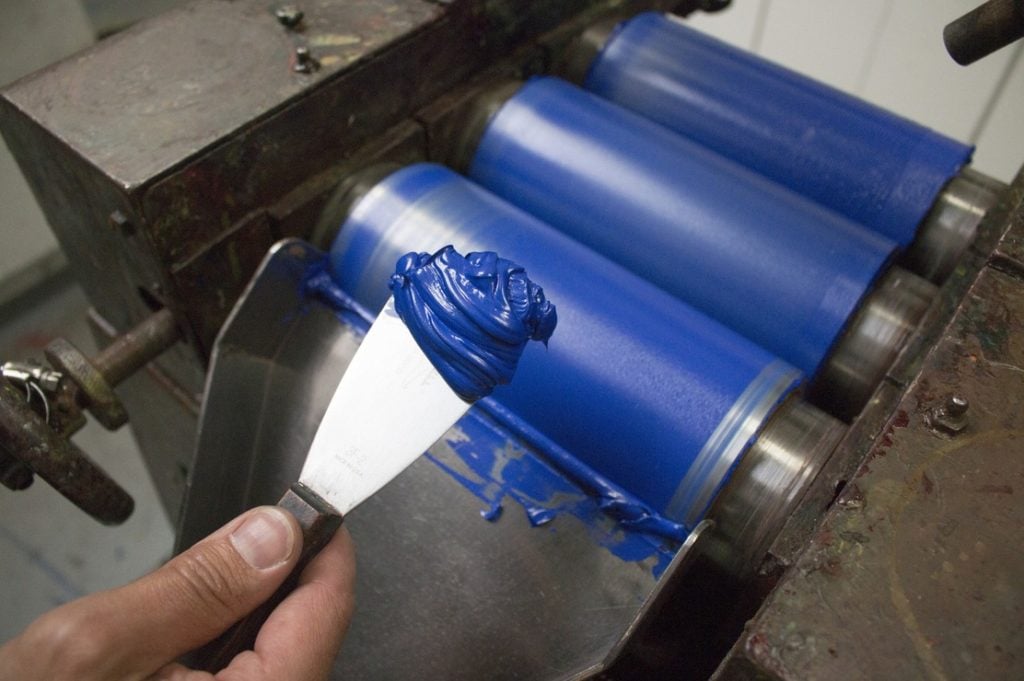
Made from rare earth elements, YInMn Blue is shockingly expensive. But that's not stopping everyone.

Sarah Cascone

YInMn Blue, the brilliant pigment discovered in 2009 at an Oregon State University lab, is finally making its way to artists’ studios.
The pigment—which is the first new blue discovered in 200 years—was finally approved by the EPA for use in artists’ materials last May. Chemist Mas Subramanian and his team serendipitously came upon it while conducting experiments with rare earth elements as part of their work with semiconductors.
Subramanian has since shifted his focus exclusively to pigments, experimenting with the elements in a trial-and-error process he hopes will someday yield a new red pigment.
But nothing he’s come across yet has been quite so stunning as YInMn Blue. (The pigment takes its name from the elements Yttrium, Indium, and Manganese.)
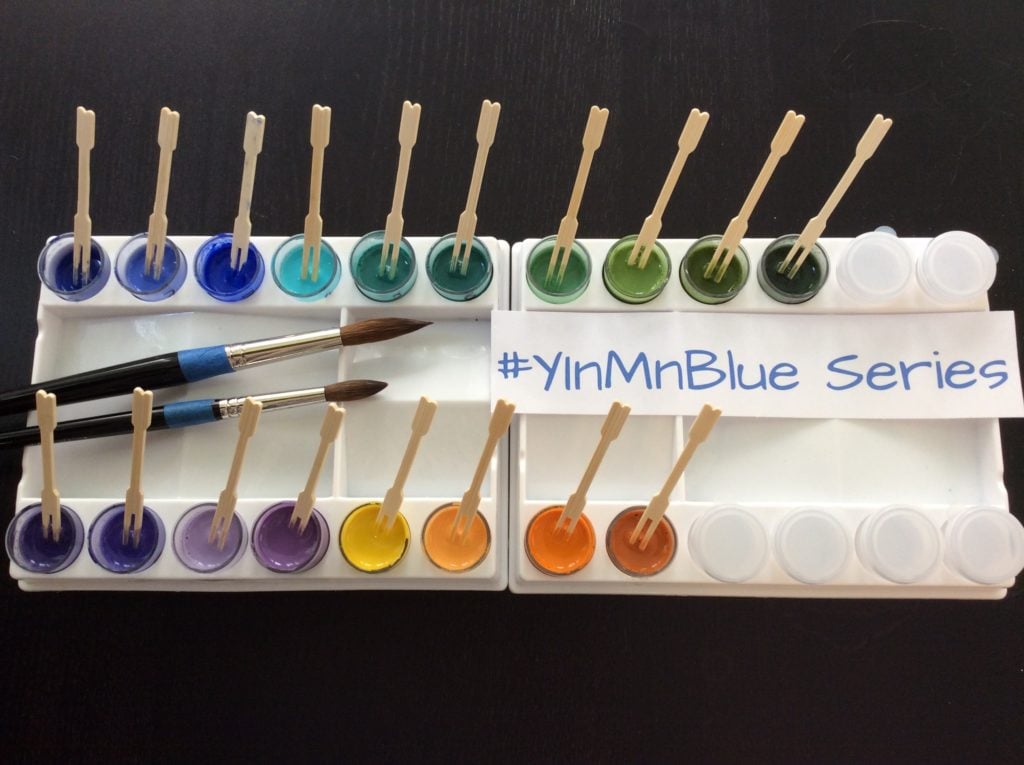
The additional colors in the YInMn Blue series as invented at Oregon State University by Mas Subramanian. Courtesy of Mas Subramanian.
Some paint-makers caught wind of the find early on. Kremer Pigmente in Aichstetten, Germany, and Golden Artist Colors in New Berlin, New York, which both now offer their own YInMn Blue art supplies, waited years to get their hands on even a tiny amount of the pigment.
“We had to tell many artists we could not sell them the material and would let them know as soon as we could,” Jodi L. O’Dell, Golden’s head of community relations, told Artnet News.
Things began scaling up after Ohio’s Shepherd Color Company acquired the license to sell the pigment commercially in 2016. Whereas the Oregon State lab could only produce a few grams of YInMn Blue at a time, the company’s facilities were able to produce hundreds of kilograms.
Public interest exploded soon after, and the pigment even inspired a new shade of Crayola crayon, Bluetiful, in 2017.
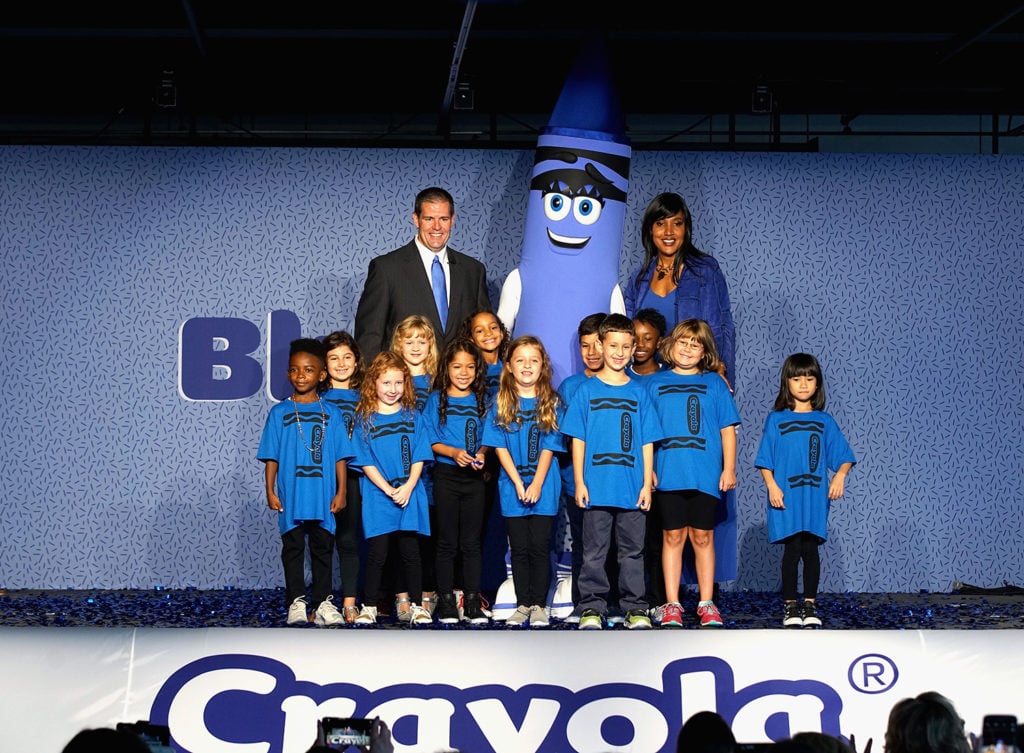
Crayola CEO and president Smith Holland and senior vice president of marketing Melanie Boulden announce Bluetiful, the winning name of its new blue crayon based on the newly-discovered YInMn Blue. Courtesy of Bennett Raglin/Getty Images for Crayola.
YInMn Blue’s appeal stems in part from its high opacity, which means you don’t need to apply much of it to get a good coating. (Ultramarine, by comparison is quite transparent.) It also has unusual hyper-spectral properties, reflecting most infrared radiation, which keeps the pigment cool.
That makes it especially well-suited for energy-saving applications on building exteriors—which was part of what attracted Shepherd Color, which sells pigments for industrial use.
“The art world likes it because of the color. The industrial world likes it because of what it can do in terms of environmental regulations for building products,” Shepherd Color marketing manger Mark Ryan told Artnet News.
The pigment also has a great deal to offer anyone more focused on the visual appeal.
“It is very vivid compared to Cobalt blue or Prussian blue, and it comes with some additional advantages in terms of the durability and stability of the pigment,” Subramanian told Artnet News.
Described as something of a cross between Ultramarine blue and Cobalt blue, YInMn Blue fills “a gap in the range of colors,” Georg Kremer, Kremer’s founder and president, said. “Our customers loved it from the very first moment they had seen it.”

YInMn Blue pigment. Photo courtesy of Oregon State University.
The pigment is also a welcome addition for anyone who has ever been disappointed by a dull, muddy purple made from combining blue and red paints.
“Traditionally, to mix a clean green you need to take something like a cerulean or phthalo blue—i.e. one biased towards yellow. However, to achieve a clean purple, one needs to mix a very red blue, like artificial ultramarine,” Steven Patterson, CEO of Australian art supply manufacturer Derivan—which has christened the pigment Oregon Blue in its Matisse line of acrylic paints—told Artnet News.
The dreaded murky purple, for instance, is “due to excess of the third primary yellow—which is just basic color theory.”
“The pureness of YInMn Blue is really perfect,” Kremer said.
But some hurdles had to be cleared before the pigment could be brought to the public.
“Once a new pigment is discovered, it has to be scaled up to useful quantities and receive regulatory approvals for commercial use,” Shepherd Color research and development manager Geoffrey Peake explained. “Those steps take another level of chemistry and engineering to be successful.”
And although YInMn Blue has been approved for US use in industrial coatings and plastics since September 2017, the nation’s art supply companies had to be a bit more patient.
“For industrial use it’s easier—when it come to consumer use, it requires much more vigorous testing,” Subramanian explained. “It’s hard to convince the EPA.”
While YInMn Blue has finally met testing requirements of the US’s Toxic Substances Control Act, it is only approved for sale as a finished paint, not as a dry pigment powder.
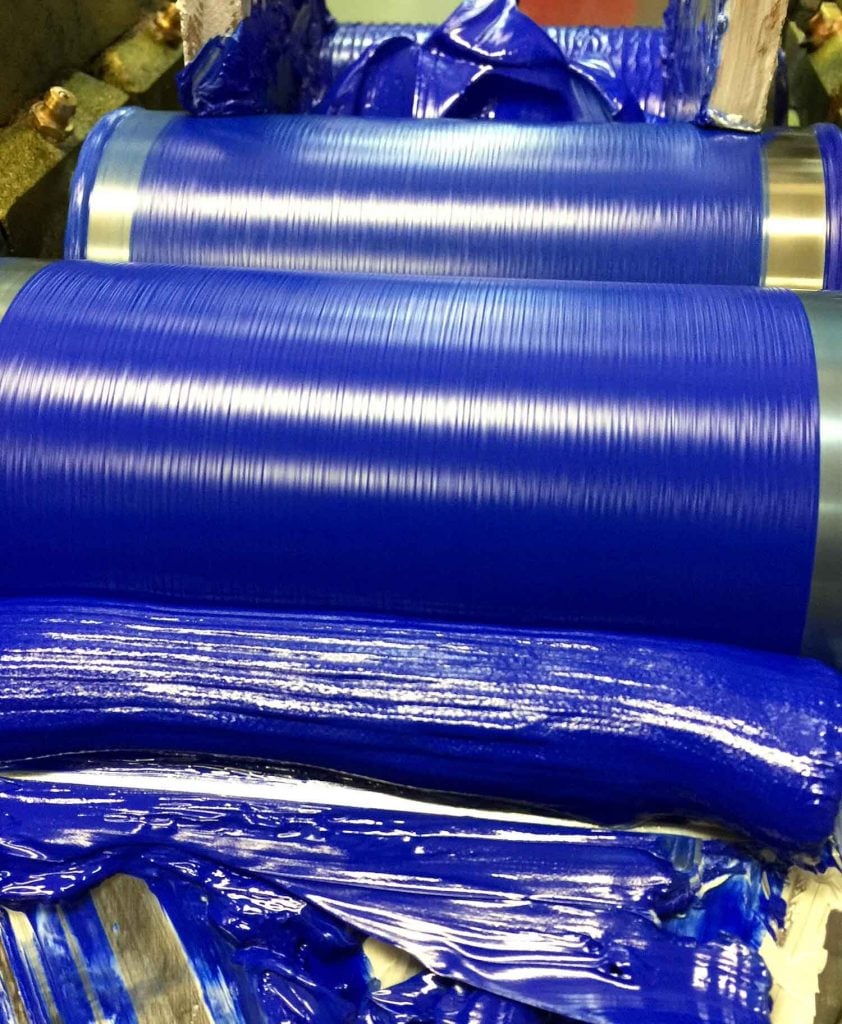
YInMn blue paint being milled. Photo courtesy of Derivan Matisse.
Not every artist was willing to wait. Subramanian told Artnet News he keeps track of YInMn blue sales on Etsy, where there appears to be something of a black market for the pigment.
Connecticut artist Michael Rothman got his hands on some Kremer YInMn blue pigment in 2019 and produced his own paint, “hand milling the dry material in acrylic emulsion resin,” he said.
The artist, who specializes in scientific illustrations, used his illicit YInMn Blue to imagine a 47 million-year-old bird believed to be the oldest to have had blue plumage.
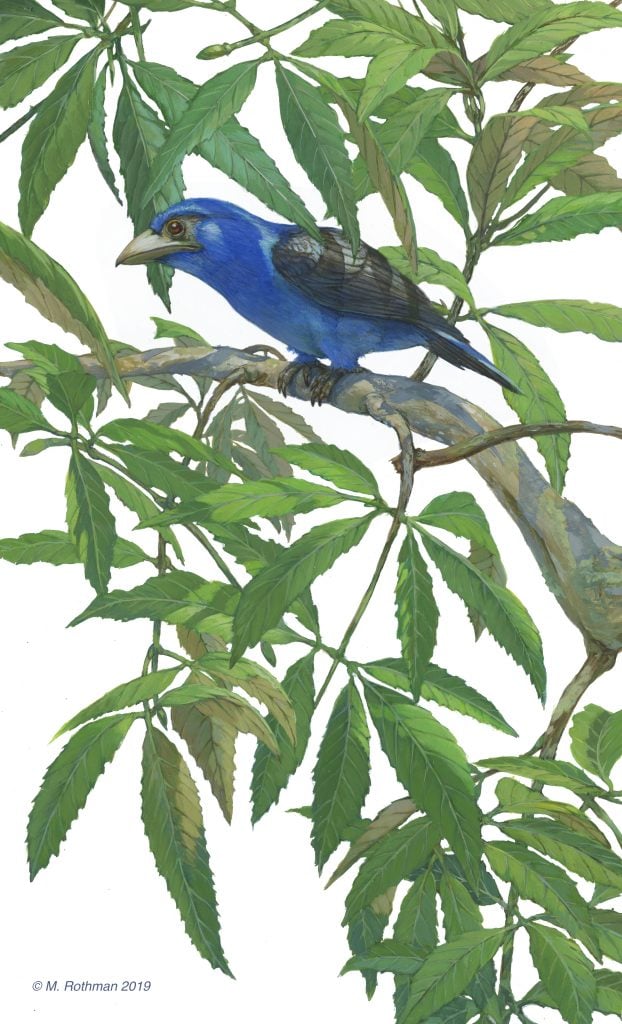
Michael Rothman, Reconstruction of Eocoracis brachyptera + Staphylea germanica, painted using YInMn Blue. Photo courtesy of the artist.
Despite its many advantages, YInMn Blue remains extremely expensive and relatively rare.
Gail Fishback of Maine’s Italian Art Store, the only US retailer selling Derivan’s YInMn Blue paint, said even her niche audience is not buying the paint in large numbers since it is about six times as expensive as her store’s most expensive tube of acrylic paint.
“From what I can tell, most of the customers are buying it out of curiosity and for bragging rights,” she said.
The store sells the paint for $179.40 for just 40 ML. By comparison, the other structure acrylics it offers starting in sizes no smaller than 75 ML are available from just $8.70.
And that sticker shock is unlikely to go away anytime soon.
That’s why several companies, such as Turner Colour Works Ltd., Holbein, and Kusakabe, all in Japan, have opted not to introduce YInMn Blue to their product line after testing the pigment. Gamblin Artists Colors said in a statement that “the cost of this pigment, relative to its benefit to painters, is too high.” Even Golden has opted to sell the pigment exclusively through its Custom Lab, rather offering it more widely.
On this #TechTuesday, we're taking you behind the scenes of our Custom Lab as we make the first batch of Heavy Body YInMn Blue. We're really excited to be working with the first new inorganic blue in 200 years. See link for more info: https://okt.to/2Rchja #goldenpaints
Posted by Golden Artist Colors on Tuesday, May 28, 2019
But the companies that have made the leap to production are sticking with it.
“Demand for the product has been steadily increasing,” O’Dell said.
Subramanian isn’t surprised. “For me, the chemistry is more fascinating than the art. But if I was an artist, I would want to try something new,” he said. “There’s a satisfaction in using a totally a new color.”